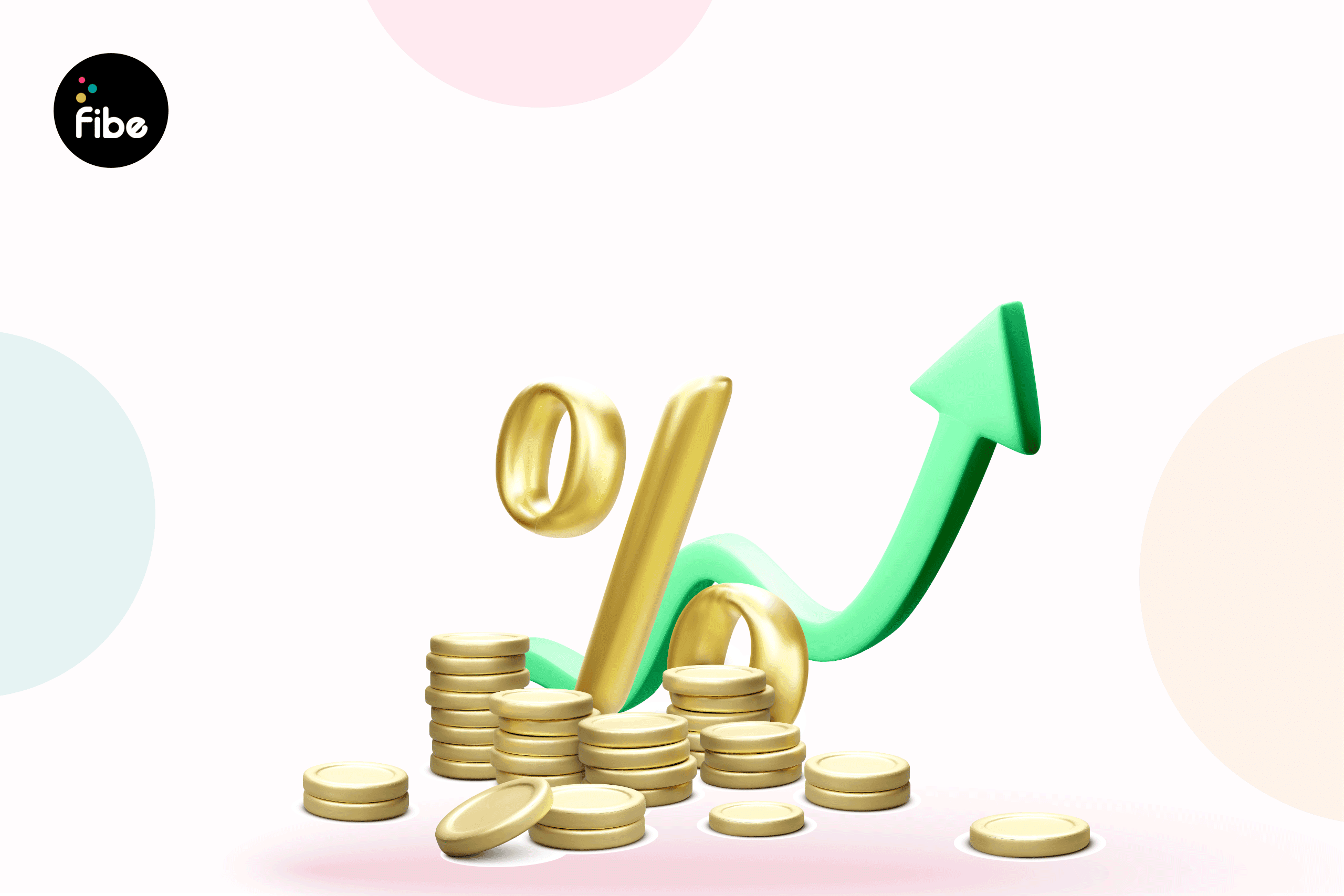- Home
- Blogs
- Fixed Deposit
- Difference Between Cumulative Non Cumulative Interest Payout
Cumulative Interest vs Quarterly Interest: Which Option Gives Better Returns?
Reviewed by: Fibe Research Team
- Updated on: 28 Aug 2025

When you open a fixed deposit (FD), you get to decide how your interest will be paid. The 2 most popular choices are cumulative interest and non-cumulative interest, like quarterly interest payout.
This choice matters because it decides:
- How much total interest will you earn
- When will you get that money
- How can you use it during the FD period
Many investors pick an option without fully understanding the difference. Some prefer a regular payout that they can spend on their expenses. Others like their interest to grow until the FD matures. Understanding the cumulative interest meaning and how quarterly interest works can help you choose the right option for yourself.
Understanding Cumulative Interest
The cumulative interest meaning is that your FD interest is not paid to you at regular intervals. Instead, it is added back to your principal deposit amount. This larger amount then earns interest in the next period. Over time, this is called compounding, your interest earns more interest.
Key features:
- No payouts during tenure: You will not receive any money until maturity
- Higher returns: Compounding makes your total maturity amount bigger
- Best for long-term goals: Suitable if you do not need money during the FD period
Example: Suppose you put ₹1,00,000 in a cumulative FD for 3 years at 7% per year. The bank adds your interest to the deposit every year. This means the next year’s interest is calculated on a bigger amount. At the end of 3 years, you get your original deposit plus all the interest in one lump sum.
What is a Quarterly Interest Payout?
Quarterly interest payout means you receive your interest every 3 months. Your principal amount stays the same throughout. There is no compounding, because the interest is paid to you instead of being reinvested.
Key features:
- Regular payments: Interest is credited every quarter
- No compounding: Interest is calculated only on your original deposit
- Good for regular expenses: Works well for people who need a steady income
Example: Suppose you put ₹1,00,000 in an FD for 3 years at 7% per year with quarterly interest payout. The bank will pay you interest every 3 months. You get approximately ₹1,750 each quarter. And at the end of 3 years, your deposit is returned to you.
What is the Difference Between Cumulative Interest and Quarterly Interest?
Here’s a table showing the main differences between the two. The key distinction is in how and when your interest is paid to you.
| Feature | Cumulative Interest | Quarterly Interest Payout |
|---|---|---|
| Payment schedule | Paid at maturity | Paid every 3 months |
| Compounding | Yes | No |
| Best for | Higher returns over time | Regular income |
| Interest on interest | Yes | No |
| Suitability | Long-term goals | Regular expenses |
| Taxation | Taxable as per slab at maturity | Taxable as per slab at payouts |
| Liquidity | Earnings locked till maturity, early withdrawal reduces returns | Money available every 3 months for immediate use |
How Do Earnings Differ Over Time?
Let’s compare both with ₹1,00,000 in a 1-year FD at 7% p.a.:
| Type | How does it works? | Total at year-end |
|---|---|---|
| Cumulative interest | Interest added back every quarter | ₹1,07,229 |
| Quarterly interest payout | Interest paid every 3 months (₹1,750 each) | ₹1,07,000 (₹1,00,000 + ₹7,000) |
In one year, the difference is small. But if you keep the FD for 5-10 years, the cumulative interest will give a noticeably higher maturity value because of compounding.
Who Should Choose Cumulative Interest?
This works best if:
- You can keep your money untouched for the FD term
- You want to grow your savings faster with compounding
- Your goal is building wealth for the future, not immediate income
Who Should Choose Quarterly Interest Payout?
This is better if:
- You need a regular income to cover expenses
- You are retired and depend on the FD interest
- You prefer a predictable cash flow over higher total returns
The right choice depends on your financial goals. If you want to make the most of compounding and don’t need the money until maturity, cumulative interest will grow your savings faster. If you need a steady income, quarterly interest payout is more practical. Both are safe and reliable FD options. It’s important to pick one basis your needs, not just returns.
Having said that, if you are planning to open an FD, Fibe makes it quick and simple. Start with as little as ₹1,000, track your investment anytime in the app and grow your savings without any paperwork or long queues!
FAQs on Cumulative Interest Vs Quarterly Interest Payout
Which is better cumulative or a quarterly interest payout?
Cumulative interest is better for higher returns and long-term goals. Quarterly interest payout is better for regular income needs.
Do I earn more with cumulative interest?
Yes. Since the interest is added back to your FD, it earns interest in the next period as well. Over time, this compounding increases your total earnings.
Who should choose quarterly interest payout options?
It is best for retirees or people who depend on FD interest for expenses. The payout every 3 months gives a predictable and regular income.
Disclaimer: All figures are based on calculations using an online FD calculator. They are hypothetical and for illustration only. Actual returns may vary depending on your bank’s rates and compounding frequency.
